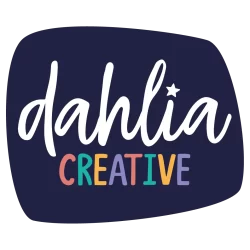 Graphic design is the art of creating visual content that communicates a message to a specific audience. It involves combining typography, images, colors, and other design elements to create an aesthetic and functional visual piece. Recently artificial intelligence (AI) has made significant advancements, which has led to concerns about its potential to replace human designers and artists. However, there are several things that graphic designers do that AI can’t replicate. Several things that algorithms and mathematics can not pull off.
Graphic design is the art of creating visual content that communicates a message to a specific audience. It involves combining typography, images, colors, and other design elements to create an aesthetic and functional visual piece. Recently artificial intelligence (AI) has made significant advancements, which has led to concerns about its potential to replace human designers and artists. However, there are several things that graphic designers do that AI can’t replicate. Several things that algorithms and mathematics can not pull off.
- Creativity
One of the primary abilities of graphic designers is creativity. They can come up with original ideas that are unique, engaging, and communicate the message effectively. Creativity is not just about generating new ideas but also about using existing design elements in innovative ways. While AI can create designs based on pre-existing templates and algorithms, it cannot come up with entirely new and creative designs on its own. If you use a logo generator it will show you the same layouts when the business name is The Blueberry as if would for the The Eyeball.
- Emotional Intelligence
Graphic design is not just about creating aesthetically pleasing visuals; it’s also about creating designs that evoke specific emotions in the audience.
Graphic designers can understand the emotions that their designs can evoke and design accordingly. They can also tailor their designs to specific demographics and cultural contexts. AI, on the other hand, lacks the emotional intelligence needed to create designs that resonate with human emotions. A set of terms are attached to colours and icons and they are computed based on keywords. Just because the colour blue envois trust and loyalty, it doesn’t mean it can’t also make you feel conflicted and icky if combined with the wrong font choice or icon.
- Contextual Awareness
Another essential skill of graphic designers is contextual awareness. They can design in a way that aligns with the client’s brand and goals, and also considers the cultural and social context in which the design will be displayed. They can also anticipate the potential impact of the design on the audience and adjust the design accordingly. AI lacks this ability as it relies solely on algorithms and cannot consider the wider context in which the design will be used.
AI does not research into your competitors, local businesses or your business history and story. Doing a logo for a winery in Barossa, the particular town that it is in is surrounded by Palm trees, but an AI would use grapevines for a winery, it wouldn’t know that the local area is better represented by Palm trees, that’s local human knowledge.
- Collaboration
Graphic design is often a collaborative process that involves working with clients, other designers, and stakeholders. The ability to collaborate and communicate effectively is crucial to creating a successful design. Graphic designers can work with clients to understand their needs, receive feedback, and make adjustments accordingly. AI, on the other hand, cannot collaborate in the same way as it lacks the ability to understand human communication.
- Intuition
AI does not rely on intuition to make design decisions, it doesn’t experience intuition because intuition can’t be computed mathematically, it comes from life experience. Graphic designers can use their experience and expertise to make decisions based on their intuition and gut feeling. This ability allows them to create designs that are unique, innovative, and effective. AI, on the other hand, relies solely on data and algorithms, and cannot replicate human intuition.
- Guidance
Lastly, AI can not help you make decisions. It doesn’t talk back and forth with you and allow you to speak your mind and have options the might guide further design decisions. For an AI logo, you enter in some details and it spits out a number of options, you then keep clicking more until you find one that works for you. You ultimately have to make the hard decision.
Whereas with a graphic designer, they will give you 3 or 4 options, and they will tell you why each one works and what feels each ones evokes. When you love something from one logo, but the colours form the second and the font choice from the third it can be done easily. AI doesn’t work that way.
In conclusion, while AI has made significant advancements in recent years, it can not replace human graphic designers. Graphic designers have unique abilities such as creativity, emotional intelligence, contextual awareness, collaboration, and intuition, that make them essential in the design process. While AI can assist in the design process, it is not capable of replicating the unique abilities of human graphic designers. Therefore, human graphic designers will continue to play a crucial role in creating effective visual content, and we need to be adjust to this new technology. Work with it so that you’re not left behind.

